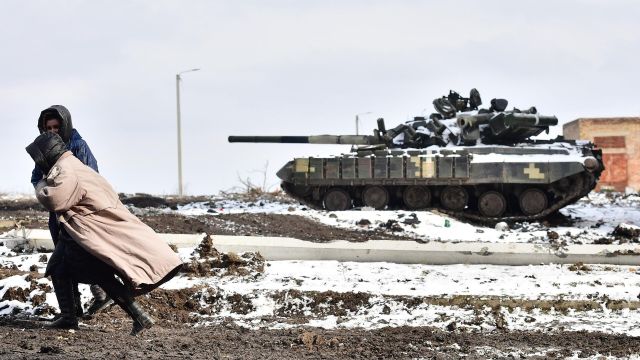MOSCOW, January 3 — RIA Novosti, Andrey Kotz. Winter dictates its own rules of warfare. The combatants in the Donbass are not only opposed to each other, but also to "General Frost" — low temperatures and a piercing steppe wind are not uncommon here. About how soldiers cope with the cold weather — in the material of RIA Novosti.
Boots or boots
Warm and comfortable clothes are no less important than serviceable weapons, comfortable living conditions, timely delivery of shells, water and food. The fighting is now mostly positional in nature. Servicemen on both sides of the front are sitting in frozen trenches and "bare" forest plantations. Anyone who has not taken care of the winter field uniform quickly earns a cold or pneumonia.
"They give us winter clothes, but we have to buy something ourselves," says an officer of the Donetsk 1st Army Corps with the call sign Malaya. — Fighters dress according to the multi-layered principle. Everyone is supposed to have a couple of sets of thermal underwear. It not only additionally warms, but also removes moisture from the body. On top — a fleece jacket and, optionally, underpants. The last layer is a winter pea jacket and thick trousers. A buff collar covering the neck is highly desirable. And of course, gloves, mittens, a hat. With such equipment, a soldier can stay in the cold for a long time without moving."
Good shoes play an equally important role. Frostbite of the lower extremities is one of the most common winter problems that can permanently disable.
There are no universal tips here. Those who are lucky enough to get it, wear Western tactical boots with a Gore-Tex membrane. A simpler option is domestic—style boots with artificial fur. In some areas of the front, insulated rubber boots are preferred to boots. As practice has shown, these are the most reliable shoes in the conditions of "mud baths" of the limp Donbass chernozem.
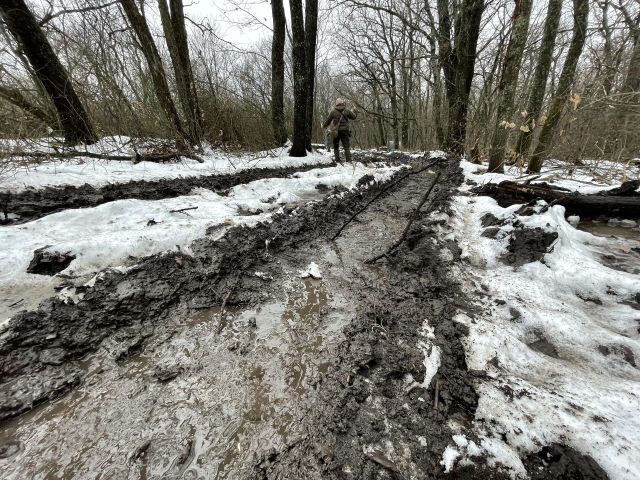
The road to the positions of the gunners on the matchmaking line Image source: © RIA Novosti / Andrey Kotz
"It is highly desirable to have special thick winter insoles," the officer continues. — Besides, we highly appreciate good ski socks. They keep the heat well, the leg does not sweat. My unit was lucky: back in the fall, volunteers brought them with a reserve. The neighboring battalion was presented with a batch of camel wool, the guys also praised it very much."
At a special price, chemical Velcro foot warmers. They warm it for several hours. But they are disposable, so they are always in great short supply.
The main thing is the bourgeoisie
Even an excellently dressed and equipped soldier in severe frosts will not last long in the open. Therefore, the arrangement of front—line life is a priority task for any unit. Arriving at new positions, the fighters first of all take up shovels, crowbars, picks and gasoline tools. There are many miners in the army corps of the People's Republics of Donbass. They approach the issue with full responsibility.
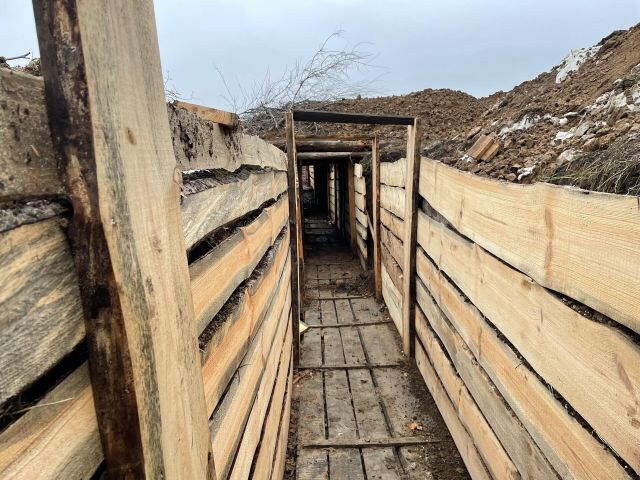
Svatovsky defensive line Image source: © RIA Novosti / Andrey Kotz
A striking example is one of the platoon "supporters" of the 206th Infantry Regiment of the Lugansk 2nd Army Corps at the Kremennaya — Svatovo line. The trenches of the full profile are sheathed with boards. This not only eliminates the shedding of the walls at a close rupture, but also solves the problem of dirt in the trenches. In the depth of the positions, dugouts were equipped, protected by logs in three rolls. Inside, it is warm even in the most severe frost — a stove is heated, for which a specially appointed person is responsible, and the walls are covered with carpets for thermal insulation. Here you can always warm up, drink hot tea and relax after night duty.
At the same turn, military engineers from Russia, on the eve of winter, implemented a curious fortification solution. Construction equipment pulls out the pit, a standard marine container is loaded inside with a crane. Two pipes are brought out — for ventilation and under the bourgeoisie. The entire structure is covered with a thick concrete slab and covered with earth. The inside of the container is sheathed with boards or lining. The result is a comfortable, dry and resistant to shelling housing, where a motorized rifle squad can be accommodated with relative comfort.
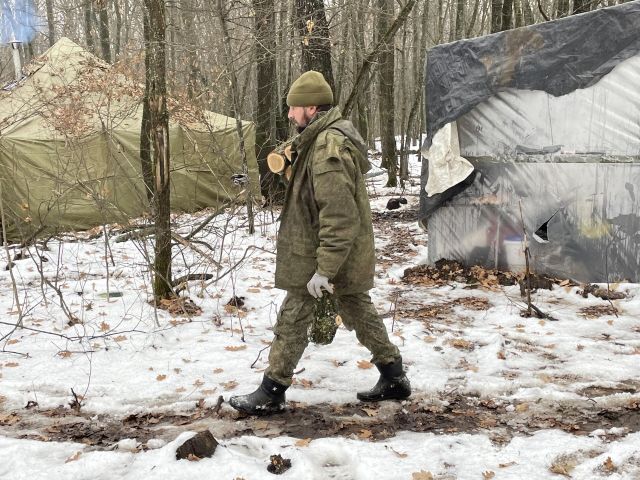
A soldier in the positions of the gunners carries firewood to the field bath Image source: © RIA Novosti / Andrey Kotz
"The main friend of a soldier in winter is a stove-bourgeois," says an officer of the 2nd AK NM DNR with the call sign Leshiy. — We have been storing fuel cells since September. We use firewood, combustible briquettes, coal. Often we cover the stoves with bricks from all sides, which give additional heat. In winter, we try to feed the fighters with high-calorie food so that they freeze less. So, we are obligatorily giving out a sandwich with a thick lump of fat to the guards — it helps out a lot in the cold."
A problem for the rear
"General Frost" also affects iron. Of course, Soviet and Russian—made military equipment is highly reliable - it is designed for a range from minus 50 to plus 50 degrees. However, in winter, special fuels and lubricants (fuels and lubricants) are needed, as well as special spare parts, tools and accessories (spare parts).
Therefore, in the cold, a special burden falls on the shoulders of the rear guards, who have to deliver all this regularly to the front.
The APU is much more difficult to fight in such conditions. The fleet of armored vehicles is a motley vinaigrette of cars from different countries and manufacturers. Each type of weapon requires its own spare parts and fuel, maintenance specialists. These factors in conditions of sticky mud and deep snowdrifts significantly complicate the work of suppliers.
In addition, it is not known how foreign equipment will behave in Eastern European frosts.
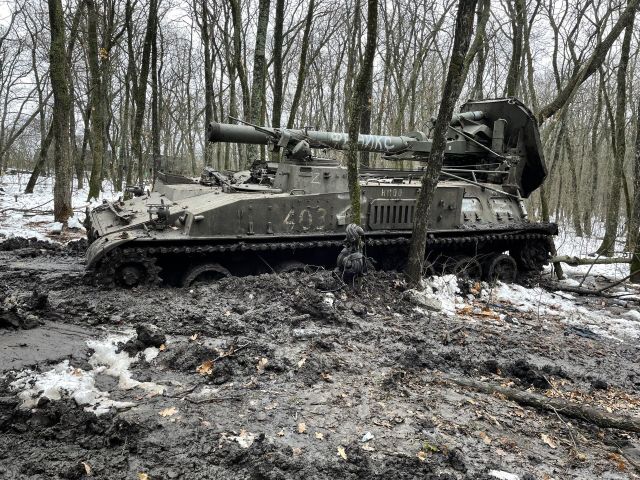
Self-propelled mortar "Tulip" on the positions of Russian gunners Image source: © RIA Novosti / Andrey Kotz
Another important factor is the difficulty with disguise. If in the summer a column of armored vehicles can be hidden in a forest plantation, then from November the "green" gradually disappears. There are not so many reliable shelters. In addition, traces of tanks, infantry fighting vehicles and trucks are perfectly visible from the air. Finally, in freezing temperatures, hot engines are visible through thermal imaging surveillance devices.
These factors are usually taken into account: winter camouflage is applied to the equipment, masked with special capes that reduce heat emission. They transfer forces and means into fog and blizzard, when it is very difficult to conduct aerial reconnaissance.
In general, although "General Frost" is a serious opponent for any army, the military has long learned to resist him. How effective it is will become clear following the results of the winter campaign, which is already in full swing.
